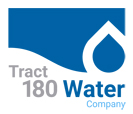Frequently Asked Questions
Many water consumption factors are accounted for on your bill including the number of days in the current billing cycle, the assumed number of residents in your home, and the square footage of your outdoor landscape that uses water. If your bill has increased drastically since last month, there are several questions we can look at to start troubleshooting!
Did you know that most water use occurs outdoors? Use the following checklist to reduce outdoor watering:
- Check your sprinkler timer.
- Check your timer’s back-up battery – this prevents your system from returning to factory settings if there is a power interruption.
- Check for leaking irrigation valves and fittings – walk your yard, station by station, looking for possible irrigation leaks.
- Check for wet spots in your yard – consistently moist or wet patches could indicate an underground leak.
Have you noticed any toilet issues? Do you have to jiggle the flush or do you hear it flush on its own sometimes?
Toilets are the #1 reason for high bills inside your house! If the flapper in your tank isn’t sitting properly, it can silently swallow hundreds of gallons per day without you even realizing it. You can test it yourself using some blue food coloring (not red!).
Do you have an auto-fill on your pool?
Auto-fill valves are useful for maintaining good operating conditions for your pool. However, we often have seen that these valves can also get stuck open so that they keep filling the pool, with the excess water draining quietly away. Be sure to include the valves in your regular checks and maintenance. When the weather is warmer and evaporation increases, a pool cover can save you money as well. Nearly 15,000 gallons are lost to evaporation from a standard size pool.
Do you have a water softener or other treatment device?
Some customers elect to use a water softener or other whole-house treatment device at their residence. Be aware that treatment devices that backwash need careful attention. If the device is backwashing multiple times per day, it will increase your water usage significantly.
On April 7, 2017, Governor Brown issued Executive Order B-40-17 which ended the Drought State of Emergency for most of the State, including our service area. However, low groundwater levels will still be recovering from the long drought for years to come. The order left in place prohibitions on wasteful practices and maintains more stringent water reporting requirements from water agencies.
In a related action, State agencies, including the Department of Water Resources have released a plan to continue making water conservation a way of life. We know that living here in Southern California, we are subject to droughts on a cyclical basis. By focusing on using water more efficiently, we will continue to build resiliency against the next drought.
Tract 180 Water Company is committed to testing, protecting, and delivering high-quality water to our customers, and we are pleased to report that the drinking water provided to your homes, schools, and businesses meets or exceeds the standards required by state and federal regulatory agencies.
We conduct several water quality tests annually to ensure your family drinks safe, clean drinking water. Our annual water quality and consumer confidence reports provide information on the sources of our water supply, information about your drinking water, and water quality results for the previous calendar year. You can view the latest reports and get more information at: www.tract180water.com/ccr.pdf
Your drinking water is tested regularly for unsafe levels of chemicals, radioactivity and bacteria at the source and in the distribution system. We test weekly, monthly, quarterly, annually or less often depending on the substance. State and federal laws allow us to test some substances less than once per year because their levels do not change frequently.
The U.S Environmental Protection Agency (USEPA) limits the amount of certain substances allowed in tap water. In California, the State Water Resources Control Board (State Board) regulates tap water quality by enforcing limits that are at least as stringent as the USEPA’s. Historically, California limits are more stringent than the Federal ones.
There are two types of these limits. known as standards. Primary standards protect you from substances that could potentially affect your health. Secondary standards regulate substances that affect the aesthetic qualities of water. Regulations set a Maximum Contaminant Level (MCL) for each of the primary and secondary standards.
The MCL is the highest level of a substance that is allowed in your drinking water.
Public Health Goals (PHGs) are set by the California Environmental Protection Agency. PHGs provide more information on the quality of drinking water to customers, and are similar to their federal counterparts, Maximum Contaminant Level Goals (MCLGs). PHGs and MCLGs are advisory levels that are non-enforceable. Both PHGs and MCLGs are concentrations of a substance below which there are no known or expected health risks.
Although we test for over 100 substances, regulations require us to report only those found in your water. The first column of the water quality table lists substances detected in your water. The next columns list the average concentration and range of concentrations found in your drinking water. Following are columns that list the MCL and PHG or MCLG, if appropriate. The last column describes the likely sources of these substances in drinking water.
To review the quality of your drinking water, compare the highest concentration and the MCL. Check for substances greater than the MCL. Exceedence of a primary MCL does not usually constitute an immediate health threat. Rather, it requires testing the source water more frequently for a short duration. If test results show that the water continues to exceed the MCL, the water must be treated to remove the substance, or the source must be removed from service.
